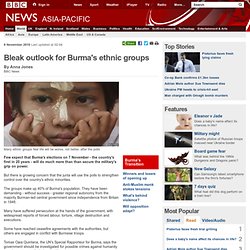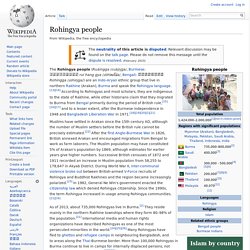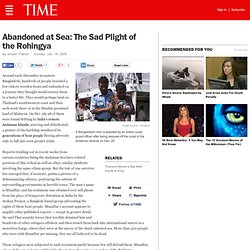

Bleak outlook for Burma's ethnic groups. 6 November 2010Last updated at 02:04 By Anna Jones BBC News Many ethnic groups fear life will be worse, not better, after the polls Few expect that Burma's elections on 7 November - the country's first in 20 years - will do much more than than secure the military's grip on power.

But there is growing concern that the junta will use the polls to strengthen control over the country's ethnic minorities. The groups make up 40% of Burma's population. They have been demanding - without success - greater regional autonomy from the majority Burman-led central government since independence from Britain in 1948. Many have suffered persecution at the hands of the government, with widespread reports of forced labour, torture, village destruction and executions. Some have reached ceasefire agreements with the authorities, but others are engaged in conflict with Burmese troops.
He also says it must engage in "meaningful dialogue" with them if the elections are to be credible.
'All the information I've given you, I faced it myself': Rural testimony on abuse in eastern Burma since November 2010. Myanmar: Lowland Dreams. December 30, 2011: The government has promised to achieve peace with all the tribal rebels within three years.

That's unlikely, but at least there is more talk of negotiations than yet another military offensive. One of the side benefits of a peace deal would be to halt the growth of the drug trade. Government efforts to reduce opium and heroin (chemically refined opium) production had some initial success, with opium production down twenty percent (to 330 tons) in 2010. But opium and heroin production seem to have recovered in the past year. Meanwhile, production of methamphetamine is soaring. Several days of peace talks with the Wa have resulted in a cease fire and Burma allowing trade to resume with people in Wa territory. Over six months of fighting has left several thousand dead or wounded, and over 30,000 refugees. The Burmese tribes got to where they are long ago as they fled the expanding Chinese empire, preferring to move rather than submit to feudal bureaucrats.
SIL Bibliography: Myanmar. Report for Myanmar. List of ethnic groups in Burma. Rohingya people. The Rohingya people (Ruáingga /ɾuájŋɡa/, Burmese: ရိုဟင်ဂျာ rui hang gya /ɹòhɪ̀ɴd͡ʑà/, Bengali: রোহিঙ্গা Rohingga /ɹohiŋɡa/) are an Indo-Aryan ethnic group that live in northern Rakhine (Arakan), Burma and speak the Rohingya language.[13][14] According to Rohingyas and most scholars, they are indigenous to the state of Rakhine, while other historians claim that they migrated to Burma from Bengal primarily during the period of British rule,[16][17] and to a lesser extent, after the Burmese independence in 1948 and Bangladesh Liberation War in 1971.[18][19][2][21] Muslims have settled in Arakan since the 15th century AD, although the number of Muslim settlers before the British rule cannot be precisely estimated.

After the first Anglo-Burmese War in 1826, British annexed Arakan and encouraged migrations from Bengal to work as farm laborers. The Muslim population may have constituted 5% of Arakan's population by 1869, although estimates for earlier years give higher numbers. Jacques P. Abandoned at Sea: The Sad Plight of the Rohingya. Around early December in eastern Bangladesh, hundreds of people boarded a few rickety wooden boats and embarked on a journey they thought would convey them to a better life.

They would perhaps land on Thailand's southwestern coast and then seek work there or in the Muslim promised land of Malaysia. On Dec. 28, 98 of them were found drifting by India's remote Andaman Islands, starving and dehydrated, a picture of the hardship weathered by generations of boat people fleeing adversity only to fall into even greater trials. Reports trickling out in recent weeks from various countries lining the Andaman Sea have related portions of this ordeal as well as other, similar incidents involving the same ethnic group. But the tale of one survivor has emerged that, if accurate, paints a picture of a dehumanizing odyssey, portraying the actions of surrounding governments in horrific tones.
These refugees were subjected to such treatment partly because few will defend them. Www.rohingya.org - Home. [SWAN]Shan Women's Action Network. Shan Human Rights Foundation. Documenting the voices of villagers in rural Burma.